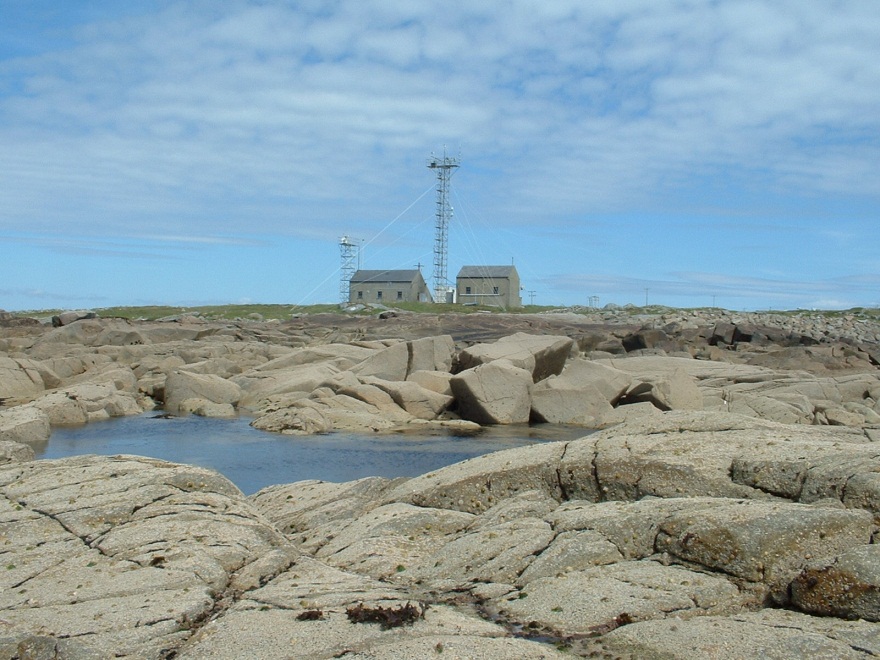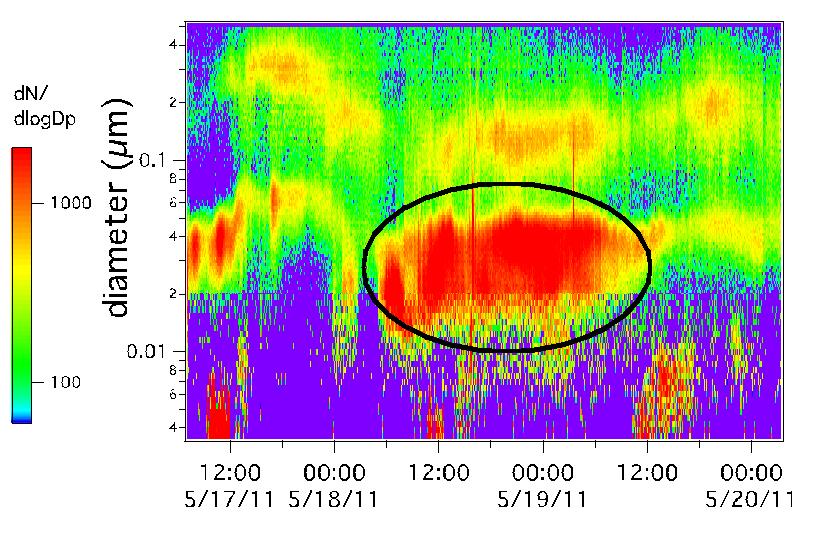Particles: Precursors of Clouds
Clouds are an important part of the earth's climate due to their absorption, emission, and reflectance of radiation. Understanding their formation and properties is critical to predicting earth's present and future radiative budgets. All of the water droplets within clouds were formed by condensation of water onto initial seed particles called cloud condensation nuclei (CCN), or ice nuclei (IN) in the case of ice clouds. These CCN sometimes come from particles directly emitted to the atmosphere, like dust, pollen, sea salt, and soot; alternatively, CCN may form via homogeneous nucleation, a process in which solid particles are formed directly out of the coagulation of gas phase molecules in the atmosphere.

ACD scientist Jim Smith and postdoc Mike Lawler study the composition of small, recently formed particles in the atmosphere in order to understand what chemical compounds are responsible for particle growth. Knowing what conditions and compounds are necessary for particles to grow is a step towards estimating how important nucleation is for cloud formation. For this work, they have developed a unique instrument called the Thermal Desorption Chemical Ionization Mass Spectrometer, or TDCIMS, to measure the composition of small (10-30 nm in diameter) particles in the atmosphere.
Particle Events in the Marine Atmosphere
In May 2011 the TDCIMS was deployed at Mace Head, Ireland, a remote coastal station (Fig. 1), alongside other instruments measuring the physical and chemical properties of ambient aerosol (a term meaning particles suspended in the air). While sea salt and dust are thought to be the main components of larger particles in clean marine air, the composition of nanometer-sized particles is still an open question. Some evidence suggests that there is a large component of mixed sulfate-organic aerosol in this size range, implying that the particles were nucleated and grown from gas phase sulfuric acid and organic compounds. Other evidence has shown that sea salt can be directly emitted from the ocean surface at these small sizes.

Figure 1. Mace Head Atmospheric Research Station.
Aerosol size distributions made at the site showed evidence for what researchers had previously termed 'open ocean nucleation' events, during which there were large increases in particle number at small sizes, around 10-70 nm (Fig. 2). The TDCIMS observations, combined with observations of particle hygroscopicity by colleagues at the University of Manchester, UK, indicate that these events likely result from the condensation of organic vapors onto existing sea salt particles. It was not possible to determine the nature of these vapors more specifically, but the clean nature of the airmasses suggests that they were emitted from the ocean surface. If this is the case, ocean biota may be the determining factor in the formation of potential CCN in this clean marine environment.

Figure 2. Scanning Mobility Particle Sizer (SMPS) plot of particles observed at Mace Head, with strong 10-70 nm particle enhancement event circled.
